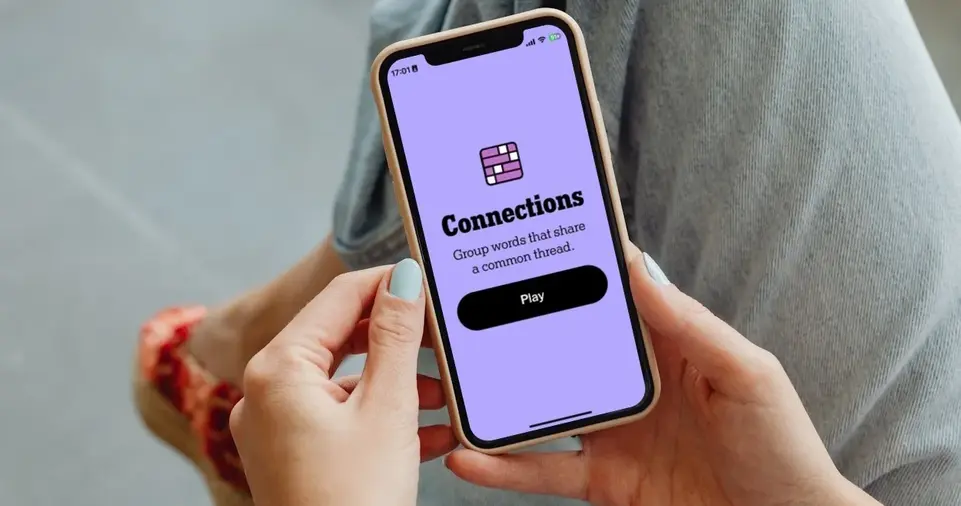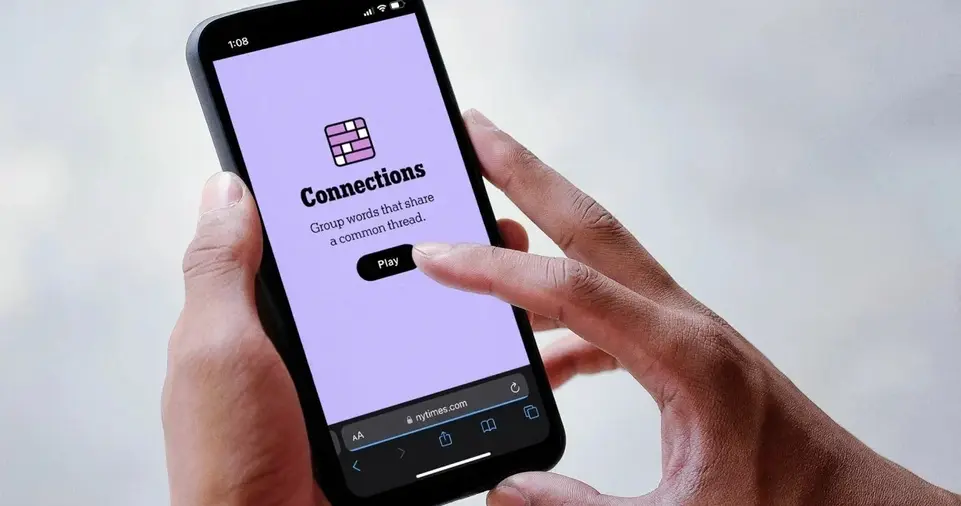The Connections Game has gained immense popularity among puzzle enthusiasts and casual gamers alike.
It’s a captivating word association challenge that sharpens your thinking, boosts vocabulary, and provides hours of entertainment.
Unlike traditional crossword puzzles or word searches, the Connections Game requires you to identify relationships between words and group them based on their shared themes or meanings.
This game is not just about knowing words but understanding how they relate to each other in unique and sometimes surprising ways.
If you’re new to this game, you might find it tricky at first. However, with a little practice and the right strategies, you can quickly become a pro.
This detailed guide will walk you through the rules, tips, and techniques to help you master the Connections Game.
Whether you’re playing it online, using a physical set, or engaging with friends in a casual setting, this comprehensive guide has everything you need to know to enjoy and excel at the game.
Let’s dive into the step-by-step process to understand how to play and improve your skills in this intriguing game.
Understanding the Objective of the Connections Game
At its core, the Connections Game challenges players to group a list of words into categories based on their shared connections.
The objective is simple: identify four groups of four words each, with each group forming a distinct category.
The challenge lies in recognizing the sometimes subtle or cleverly hidden relationships between words.
Key Elements of the Game:
- The Word Grid: Typically, the game consists of a 4×4 grid of 16 words. These words can be nouns, verbs, adjectives, or even proper nouns.
- The Connections: Each group of four words shares a common theme or characteristic. Examples include synonyms, thematic links (e.g., all fruits or colors), cultural references, or even homonyms.
- The Time Factor (Optional): Some versions of the game include a timer, adding an element of urgency.
The real fun begins when you start identifying patterns and connections.
Some categories are straightforward, while others are more abstract or require lateral thinking.
The game’s appeal lies in its ability to challenge your mind while being accessible to players of all skill levels.
ALSO READ: How to Solve Jigsaw Puzzles Faster: 7 Proven Techniques
Step by Step Guide to Play the Connections Game

Step 1: Setting Up the Connections Game
Before diving into gameplay, it’s essential to set up the game correctly. The setup process varies depending on the format you’re using.
Here are the common setups:
Digital Format:
Many online platforms and apps offer the Connections Game with user-friendly interfaces.
Follow these steps:
- Choose a Platform: Popular websites or apps often have pre-designed grids ready to play.
- Access the Grid: Open the game to reveal the 4×4 grid of 16 words.
- Familiarize Yourself: Spend a moment studying the grid to get an initial sense of the words.
Physical Format:
If you’re playing offline, you can create your own grid or use pre-made cards.
- Prepare the Cards: Write 16 words on separate cards or pieces of paper.
- Arrange the Grid: Lay the cards out in a 4×4 pattern.
- Gather Materials: Have a pen and paper handy to jot down notes or guesses.
Regardless of the format, the setup is quick and straightforward, allowing you to jump into the game with minimal preparation.
Step 2: Analyzing the Words on the Grid
Once the game begins, your first task is to carefully examine the 16 words on the grid. This step is crucial as it sets the foundation for forming your groups.
Here’s how to approach this stage:
Scan the Grid:
- Read All the Words: Take your time to read through all 16 words. Avoid rushing, as connections are not always immediately obvious.
- Look for Patterns: Try to identify any words that seem related. For example, if you see words like “apple,” “banana,” and “orange,” they might belong to a “fruits” category.
Identify Obvious Groups:
- Start with Easy Connections: Pick out words that have clear relationships. For example, synonyms or commonly associated items are usually the simplest to group.
- Note Possible Categories: Jot down potential groupings as you notice them. This will help you stay organized as you progress.
Consider Hidden Connections:
Some connections may be less obvious and require creative thinking.
For example:
- Homonyms: Words that sound the same but have different meanings (e.g., “bank” as in a riverbank vs. a financial institution).
- Cultural References: Names of celebrities, movies, or historical events.
Step 3: Forming the Groups
After analyzing the words, it’s time to start grouping them into categories.
This is the heart of the Connections Game, where strategy and logical thinking come into play.
Test Your Guesses:
- Select Four Words: Choose four words that you believe share a connection.
- Submit Your Guess: In digital formats, click or drag the words to group them. In physical formats, set the cards aside as a group.
- Check for Accuracy: Most games will indicate whether your group is correct. If it’s not, reassess your guess.
Work Systematically:
- Start with Confirmed Groups: Once you’ve correctly identified a group, set it aside or mark it as completed.
- Focus on Remaining Words: As you narrow down the possibilities, it becomes easier to identify the remaining groups.
Avoid Common Pitfalls:
- Overthinking: Don’t second-guess yourself too much. Trust your instincts when a connection feels obvious.
- Guessing Randomly: Avoid random guesses, as they rarely lead to success and can waste time.
Step 4: Refining Your Strategy
Even if you’re stuck, there are several strategies to help you refine your approach and solve the grid more effectively.
Break Down Complex Words:
If a word’s connection isn’t clear, consider its synonyms, antonyms, or possible multiple meanings.
For instance, the word “plant” could refer to a factory or a living organism.
Think Thematically:
Some grids include thematic groups that require you to think broadly.
For example:
- Geographical Connections: Cities, countries, or landmarks.
- Pop Culture: Names of famous characters, movies, or songs.
Use Elimination:
If you’ve identified three correct groups, the remaining words automatically form the final group. This process of elimination simplifies the task.
Step 5: Celebrating Success and Learning from Mistakes
Once you’ve successfully grouped all 16 words, take a moment to celebrate your achievement.
Reflecting on the game can also help you improve for future rounds.
Review Your Process:
- Identify Strengths: What categories did you spot quickly? These highlight your strong areas of association.
- Learn from Challenges: Were there any connections you missed or struggled with? Take note of these for practice.
Practice Regularly:
The more you play, the better you’ll become at spotting patterns and making connections.
Consistent practice builds your skills and enhances your enjoyment of the game.
Tips for Beginners
To help you get started and improve quickly, here are some practical tips:
Stay Organized:
- Write down potential categories as you identify them.
- Use visual aids like highlighting or circling words in physical formats.
Think Outside the Box:
- Connections are not always literal. Be open to abstract or unconventional relationships.
Use Hints Sparingly:
- Many digital versions offer hints, but try to rely on your skills first. Hints are best saved for particularly tricky grids.
Practice with Friends:
- Playing with others can provide new perspectives and ideas, making the game even more enjoyable.
ALSO READ: How to Find the Longest Words in the Blossom Word Game
Conclusion
The Connections Game is a delightful blend of logic, vocabulary, and creativity.
By following this step-by-step guide, you can build the skills needed to master the game and uncover the fascinating relationships between words.
Whether you’re a beginner or an experienced player, the game offers endless opportunities for learning and fun. So, grab a grid, start grouping, and enjoy the satisfaction of finding connections you never imagined!

